The History Of Nissan
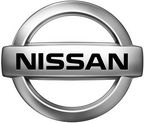
Nissan Motor Company, Ltd. (日産自動車株式会社,, Nissan Jidōsha Kabushiki-gaisha?), shortened to Nissan is a multinational automaker headquartered in Japan. It was formerly a core member of the Nissan Group, but has become more independent after its restructuring under Carlos Ghosn (CEO).
It formerly marketed vehicles under the "Datsun" brand name and is one of the largest car manufacturers. The company's main offices are located in the Ginza area of Chūō, Tokyo. In 1999, Nissan entered an alliance with Renault S.A. of France, which owns 44.4% of Nissan as of 2008. Nissan is among the top three Asian (also known as the Japanese Big 3 Automakers) rivals of the "Big Three" in the U.S. Currently they are the third largest Japanese car manufacturer. It also manufactures the Infiniti luxury brand.
The Nissan VQ engines, of V6 configuration, have featured among Ward's 10 Best Engines for 14 straight years, since the award's inception. For the truck and bus maker "Nissan Diesel," it is a separate company from Nissan Motors, please see UD instead.
The pronunciation of its name is different in different markets. In the U.S., the brand is pronounced / ˈniːsɑːn/ , while in the UK it is / ˈnɪsæn/ . In Japanese, it is IPA:[nisːãɴ].
Beginnings of Datsun name from 1914
In 1914, the Kwaishinsha Motorcar Works (快進自動車工場, Kaishin Jidōsha Kōjō?), established three years earlier, in Azabu-Hiroo District in Tokyo, built the first DAT. The new car's name was an acronym of the company's partners' family names:
- Kenjiro Den (田 健次郎, Den Kenjirō?)
- Rokuro Aoyama (青山 禄朗, Aoyama Rokurō?)
- Meitaro Takeuchi (竹内 明太郎, Takeuchi Meitarō?).
It was renamed to Kwaishinsha Motorcar Co. in 1918, and again to DAT Motorcar Co. in 1925 after Mr. Nissan (pronounced nii-saan) Son Dat-San. DAT Motors built trucks in addition to the DAT and Datsun passenger cars. The vast majority of its output was trucks, as there was almost no consumer market for cars at the time. Beginning in 1918, the first DAT trucks were produced for the military market. It was the low demand of the military market in the 1920s that forced DAT to merge in 1926 with Japan's 2nd most successful truck maker, Jitsuyo Motors.
In 1926 the Tokyo-based DAT Motors merged with the Osaka-based Jitsuyo Jidosha Co., Ltd. (実用自動車製造株式会社, Jitsuyō Jidōsha Seizō Kabushiki-Gaisha?) a.k.a. Jitsuyo Motors (established 1919, as a Kubota subsidiary) to become DAT Automobile Manufacturing Co., Ltd. (ダット自動車製造株式会社, Datto Jidōsha Seizō Kabushiki-Gaisha?) in Osaka until 1932.
In 1931, DAT came out with a new smaller car, the first "Datson", meaning "Son of DAT". Later in 1933 after Nissan took control of DAT Motors, the last syllable of Datson was changed to "sun", because "son" also means "loss" (損) in Japanese, hence the name "Datsun" (ダットサン, Dattosan?).
In 1933, the company name was Nipponized to Jidosha-Seizo Co., Ltd. (自動車製造株式会社, Jidōsha Seizō Kabushiki-Gaisha?, "Automobile Manufacturing Co., Ltd.") and was moved to Yokohama.
Nissan name first used in 1930s
In 1928, Yoshisuke Aikawa founded the holding company Nippon Sangyo (Japan Industries or Nippon Industries). "The name 'Nissan' originated during the 1930s as an abbreviation" used on the Tokyo stock market for Nippon Sangyo. This company was the famous Nissan "Zaibatsu" (combine) which included Tobata Casting and Hitachi. At this time Nissan controlled foundries and auto parts businesses, but Aikawa did not enter automobile manufacturing until 1933.
Nissan would eventually grow to include 74 firms, and to be the fourth-largest combine in Japan during World War II.
In 1931, Aikawa purchased controlling(?) shares in DAT Motors, and then in 1933 it merged Tobata Casting's automobile parts department with DAT Motors. As Tobata Casting was a Nissan company, this was the beginning of Nissan's automobile manufacturing.
Nissan Motors founded in 1934
In 1934, Aikawa "separated the expanded automobile parts division of Tobata Casting and incorporated it as a new subsidiary, which he named Nissan Motor (Nissan)". Nissan Motor Co., Ltd. (日産自動車, Nissan Jidōsha?). The shareholders of the new company however were not enthusiastic about the prospects of the automobile in Japan, so Aikawa bought out all the Tobata Casting shareholders (using capital from Nippon Industries) in June, 1934. At this time Nissan Motors effectively became owned by Nippon Sangyo and Hitachi.
Nissan built trucks, airplanes, and engines for the Japanese military. The company's main plant was moved to China after land there was captured by Japan. The plant made machinery for the Japanese war effort until it was captured by American and Russian forces. For two years (1947 to 1948) the company was briefly called Nissan Heavy Industries Corp.
Nissan's early American connection
DAT had inherited Kubota's chief designer who was an American, William R. Gorham. This, along with Aikawa's vision-inspiring 1908 visit to Detroit was to greatly affect Nissan's future.
Although it had always been Aikawa's intention to use the latest cutting-edge automaking technology from America, it was Gorham that carried out this plan. All the machinery, vehicle designs and engine designs originally came out of the United States. Much of the tooling came from the Graham factory and Nissan had a Graham license under which trucks were made. The machinery was imported into Japan by Mitsubishi on behalf of Nissan, which went into the first Yokohama factory to produce cars.
Relationship with Ford Motor Company
From 1993-2002 Nissan partnered with Ford to market a consumer-friendly minivan: The Mercury Villager and the Nissan Quest. The 2 minivans were manufactured with all the same parts and were virtually identical aside from several cosmetic differences. In 2002, Ford discontinued their Mercury version of the Nissan Quest to make room for the future Freestar and Monterey. Nissan brought out a new version of the Quest in 2004 which was designed in house and no longer related to any Ford model.
In 1992, Nissan re-launched its Terrano four-wheel drive, which was visually and mechanically identical to the Ford Maverick. Both cars were built in Spain, although the Maverick was discontinued in 1998 due to disappointing sales, the Terrano was a strong seller and remained in production until 2005 when the Nissan Pathfinder replaced it.
Tie-ups with Austin Motor Company
Like Hino and Isuzu, but unlike Toyota, Nissan partnered with an established European company to gain access to automobile and engine designs. Nissan chose Austin of the United Kingdom, which later became the British Motor Corporation by its merger with Morris et al. Nissan began building Austin 7s in 1930, though the legitimacy of their license at that time is debated.
Later, in 1952 Nissan Motor Company of Japan entered into a well-documented legal agreement with Austin , for Nissan to assemble 2,000 Austins from imported partially assembled sets and sell them in Japan under the Austin trademark. The agreement called for Nissan to make all Austin parts locally within three years, a goal Nissan met. Nissan produced and marketed Austins for seven years. The agreement also gave Nissan rights to use Austin patents, which Nissan used in developing its own engines for its Datsun line of cars. In 1953 British-built Austins were assembled and sold, but by 1955, the Austin A50 -- completely built by Nissan and featuring a slightly larger body with new 1489cc engine -- was on the market in Japan. Nissan produced 20,855 Austins from 1953-1959.
Engine Development: Nissan leveraged the Austin patents to further develop their own modern engine designs past what the Austin's A- and B-family designs offered. The apex of the Austin-derived engines was the new design A series engine in 1967. Also in 1967 Nissan introduced its new highly advanced four cylinder overhead cam (OHC) Nissan L engine, which while similar to Mercedes-Benz OHC designs was a totally new engine designed by Nissan. This engine powered the new Datsun 510, which gained Nissan respect in the worldwide sedan market. Then, in 1970 Nissan introduced the Datsun 240Z sports car which used a six-cylinder variation of the L series engine. The 240Z was an immediate sensation and lifted Nissan to world class status in the automobile market.[citation needed]
Merger with Prince Motor Company
In 1966, Nissan merged with the Prince Motor Company, bringing into its range more upmarket cars, including the Skyline and Gloria. The Prince name was eventually abandoned, with successive Skylines and Glorias bearing the Nissan name - however, "Prince" is still used in names of certain Nissan dealers in Japan. Nissan introduced a new luxury brand for the US market in the early 1990s called Infiniti.
Foreign expansion
In the 1950s, Nissan made a conscious decision to expand into worldwide markets. Nissan management realized their Datsun small car line would fill an unmet need in markets such as Australia and the world's largest car market, the United States. In 1958 they first showed cars at the 1959 Los Angeles auto show, and sold a few cars that year in the United States. The company formed a U.S. subsidiary, Nissan Motor Corporation U.S.A., in 1959, headed by Yutaka Katayama. By continually technologically improving their sedans, along with chic Italianate styling and adding sporty cars such as the Datsun Fairlady roadsters, the sporty and race-winning 411 series, the Datsun 510 and the world-class Datsun 240Z sports car, by 1970 Nissan had become one of the world's largest exporters of automobiles.
In the wake of the 1973 oil crisis, consumers worldwide (especially in the lucrative U.S. market) began turning in rapidly increasing numbers to high-quality small economy cars. Nissan made a conscious decision for their growing economy car lines to have a "sporting" flavor, and set up new factories in Mexico, Australia, Taiwan and South Africa.
The firm established assembly operations in the United States in the early 1980s, with a plant in Smyrna, Tennessee. This facility at first built only trucks and SUVs, such as the 720, Hardbody, and Pathfinder, but has since been expanded to produce several car lines. An engine plant in Decherd, Tennessee followed, and most recently a second assembly plant in Canton, Mississippi.
In order to overcome export tariffs and delivery costs to its European customers, Nissan contemplated establishing a plant inside Europe's borders. After an extensive review, Sunderland in United Kingdom was chosen due to the local availability of a highly skilled workforce and its position near major ports. The plant was completed in 1986 as the subsidiary Nissan Motor Manufacturing (UK) Ltd. Since then it has arisen to achieve the highly coveted title of being the most productive plant in Europe, and by 2007 will be producing 400,000 vehicles per year.
Financial difficulties (approaching billions) in Australia in the late 1980s caused Nissan to cease production there. Due to the "Button Plan" the Australian operation was unique as the Nissan products were also re-badged both by General Motors Holden (Pulsar re-badged as Holden Astra), and Ford (Bluebird re-badged as Ford Corsair).
Trucks
The Nissan Titan was introduced in 2004, as a full-size pickup truck produced for the North American market, the truck shares the stretched Nissan F-Alpha platform with the Nissan Armada and Infiniti QX56 SUVs.
The Titan features a 32 valve 5.6L VK56DE V8 engine which generates 317hp, and is capable of towing approximately 9500 pounds. The Nissan Titan comes in four basic trim levels: XE, SE, Pro-4X, and LE. The trim levels are combinations of the features offered on the truck. It was listed by Edmunds.com as the best full-size truck. The Titan was nominated for the North American Truck of the Year award for 2004.
Lawsuit Against Nissan Computers
In December 1999, legal action was instituted by Nissan Motors seeking $10,000,000 in damages from Uzi Nissan, founder and president of Nissan Computer Corp. Uzi Nissan registered the domain name nissan.com on June 4, 1991, The outcome of the case was in favor of Nissan Computer Corp, to whom was also awarded partial attorney fees.
Alliance with Renault
In 1999, with Nissan facing severe financial difficulties, Nissan entered an alliance with Renault S.A. of France.
Signed on March 27, 1999, the Renault-Nissan Alliance is the first of its kind involving a Japanese and a French car manufacturer, each with its own distinct corporate culture and brand identity. The same year, Renault appointed its own Chief Operating Officer, Carlos Ghosn, as Chief Operating Officer of Nissan and took a 22.5% stake in Nissan Diesel. Later that year, Nissan fired its top Japanese executives.
The Renault-Nissan Alliance is a unique[citation needed] group of two global companies linked by cross-shareholding, with Renault holding 44.3% of Nissan shares, while Nissan holds 15% of (non-voting) Renault shares.
Under president Ghosn's "Nissan Revival Plan" (NRP), the company has rebounded in what many leading economists consider to be one of the most spectacular corporate turnarounds in history, catapulting Nissan to record profits and a dramatic revitalization of both its Nissan and Infiniti model line-ups. Despite the turnaround, Infiniti sales have been a disappointment. In 2001, the company initiated Nissan 180, capitalizing on the success of the NRP. The targets set with 180 were an additional sale of 1 million cars, achieving operating margins of 8%, and to have zero automotive debts. Ghosn has been recognized in Japan for the company's turnaround in the midst of an ailing Japanese economy. Ghosn and the Nissan turnaround were featured in Japanese manga and popular culture. His achievements in revitalizing Nissan were noted by Emperor Akihito, who awarded him the Japan Medal with Blue Ribbon in 2004.
The first product of the Nissan-Renault alliance was the Nissan Primera, launched in 2001 and based on the Renault Laguna that had been launched in 2000. Subsequently, Nissan's Micra, Note and Versa models have shared the same mechanical design as the Renault Clio.
Recent news
The Nissan Note, Micra and Qashqai in the UK are all produced at their UK factory in Washington, Sunderland. On January 9, 2009, it was announced that 1,200 jobs were to be cut at the Washington plant. The decision was blamed on economic reasons, including a downturn in the car selling market. Nissan's senior vice-president for manufacturing in Europe, Trevor Mann, said the company was "right-sizing our operations to the market demand." Nissan also produces cars at its factory at Roslyn, near Pretoria, South Africa.
In 2002, Toyota and Nissan agree to tie-up on hybrid technologies, and in 2004, Nissan unveiled the Altima hybrid prototype.
Nissan began development of fuel-cell vehicles (FCVs) in 1996 and launched limited lease sales of the X-Trail FCV in Japan in fiscal year 2003.
On May 17, 2006 Nissan released the Atlas 20 hybrid truck in Japan. It released a Cabstar hybrid truck at the 2006 Hannover Fair.
On June 30, 2006, General Motors convened an emergency board meeting to discuss a proposal by shareholder Kirk Kerkorian to form an alliance between GM and Renault-Nissan. On October 4, 2006, however, GM and Nissan terminated talks because of the chasm between the two companies related to compensation to GM from Nissan.
The company's head office is now in Tokyo but will move back to Yokohama in 2009.
Nissan North America relocated its headquarters from Gardena, California to Nashville, Tennessee in July 2006. A new headquarters, Nissan Americas, was dedicated on July 22, 2008, in the Cool Springs area of Franklin, Tennessee. Approximately 1500 employees work in the facility.
The Tamil Nadu state government signed a memorandum of understanding (MoU) with auto manufacturing consortium, Mahindra-Renault- Nissan to set up a production unit at Oragadam in suburban Chennai last week.
The consortium comprising Indian auto major Mahindra and Mahindra, Renault (France) and Nissan (Japan) will begin with an initial investment of Rs4000 crore to manufacture nearly 50,000 tractors every year other than cars, utility vehicles and spare parts.
The project is expected to increase Tamil Nadu’s Gross Domestic Product (GDP) by Rs18,000 crore annually while providing 41,000 jobs.
Recently, it has been announced that Nissan will axe 1200 jobs from the Sunderland factory as there is a sharp reduction in the number of cars being bought.
Until recently[when?], Nissan Motors has had no special environmental record, at least as perceived relative to its competition. This may change in the future owing to a new emphasis on the development, production and marketing of electric automobiles. Nissan is planning to sell electric cars in California by 2010 (although only to fleet customers, a common method of introducing new technology). The company claims to have an EV model out that has a maximum speed of 75mph (121km/ h) and can go 100 miles per charge. It is projected to take eight hours to fully charge the car. Nissan's car uses a lithium ion battery. The vehicle is intended for short distances, and is not meant for replacing traditional cars for long trips. In 2012, Nissan states that it will market electric cars for delivery in cities all over the world. As with other electric cars these products from Nissan won't emit pollutants from their exhaust. Any pollution involved in their operation would come from the production of the electricity needed to charge the car, depending on the type of power generation facility. Nissan has chosen to develop 100 percent electric cars rather than biofuel or ethanol running cars based upon cost analysis.
Presidents and Chief Executive Officers of Nissan:
- 1933-1939 Yoshisuke Aikawa
- 1939-1942 Masasuke Murakami
- 1942-1944 Genshichi Asahara
- 1944-1945 Haruto Kudo
- 1945 Takeshi Murayama
- 1945-1947 Souji Yamamoto
- 1947-1951 Taichi Minoura
- 1951-1957 Genshichi Asahara
- 1957-1973 Katsuji Kawamata
- 1973-1977 Tadahiro Iwakoshi
- 1977-1985 Takashi Ishihara
- 1985-1992 Yutaka Kume
- 1992-1996 Yoshifume Tsuji
- 1996-2000 Yoshikazu Hanawa
- 2000-present Carlos Ghosn
Automotive products
Main articles: List of Nissan vehicles and List of Nissan engines.Nissan has produced an extensive range of mainstream cars and trucks, initially for domestic consumption but exported around the world since the 1950s. There was a major strike in 1953.
It also produced several memorable sports cars, including the Datsun Fairlady 1500, 1600 and 2000 Roadsters, the Z-car, an affordable sports car originally introduced in 1969; and the GT-R, a powerful all-wheel-drive sports coupe.
In 1985, Nissan created a tuning division, NISMO, for competition and performance development of such cars.Nismo's latest model is the 350Z LM.
The recently launched mid-sized Nissan Navara truck has 175bhp (130kW).
Until 1982, Nissan automobiles in most export markets were sold under the Datsun brand. Since 1989, Nissan has sold its luxury models in North America under the Infiniti brand.
Nissan also sells a small range of keicars, mainly as a joint venture with other Japanese manufacturers like Suzuki or Mitsubishi. Nissan does not develop these cars. Nissan also has shared model development of Japanese domestic cars with other manufacturers, particularly Mazda, Subaru, Suzuki and Isuzu.
In China, Nissan produces cars in association with the Dongfeng Motor Group including the 2006 Nissan Livina Geniss. This is the first in the range of a new worldwide family of medium sized cars and is to make its world debut at the Guangzhou International Motor Show.
Nissan launches Qashqai SUV in South Africa, along with their new motorsport Qashqai Car Games.
Electric vehicles
Carlos Ghosn, chief executive of Nissan Motor, which is 44% owned by Renault, plans to start selling electric cars in 2012 as the company anticipates demand from city drivers. "It would be good date for both for Renault and Nissan" to introduce mass-market electric cars, Ghosn told a group of journalists at the Tokyo Motor Show on Wednesday October 24, 2007.
Renault-Nissan Motors alliance is in the Advisory Council of the PHEV Research Center.
Nissan Motor and Robert Bosch GmbH are in talks to form a comprehensive alliance in hybrid systems and parts.
When Nissan launches its new line of electrical vehicles in America in 2010, it will initially target fleet buyers, which can provide their own charging stations. "It will be a real business," says Tom Lane, Nissan's global product-planning chief, "not just a way to sell 200 cars in California." He expects sales to retail buyers to begin in 2012, at a price of around $25,000.
Nissan is also hedging its bets by developing both a "parallel hybrid" system (akin to that found in the Toyota Prius) and a plug-in "series hybrid" similar to the Chevy Volt. But it favours the all-electric approach, even though it will be a tough sell, says Mr Lane. As for Mr Ghosn, he has no doubts. "We must have zero-emission vehicles," he says. "Nothing else will prevent the world from exploding."
Nissan Motor Company, Ltd. aims to profit from the next generation of plug-in hybrid vehicles. In April, the company launched a joint venture with NEC Corporation and its subsidiary, NEC TOKIN Corporation, to develop and mass produce advanced lithium-ion batteries. On May 19, the new company, called Automotive Energy Supply Corporation (AESC), began full operations. The new company will invest $114.6 million over a three-year period in a manufacturing facility that will start producing 13,000 batteries per year in 2009. At full capacity, the plant will manufacture 65,000 batteries per year.
The batteries employ a compact laminated configuration with lithium-manganese electrodes, which NEC TOKIN will manufacture at a separate facility through an additional investment of $105.1 million over the next three years. AESC intends to install the batteries in electric forklifts next year, and Nissan plans to use the batteries in both a hybrid and an all-electric vehicle starting in 2010. Nissan claims that the batteries deliver twice as much power as the nickel-metal hydride batteries used in today's hybrid vehicles. In field tests exceeding 60,000miles (97,000km), the batteries have demonstrated high performance without any safety problems, according to the company.
In January 2008, Hiro Nakamura, Nissan's global design director stated that the Nissan Cube will be coming to the U.S. market as the Nissan Denki Cube.Making its debut at the March 2008 New York International Auto Show, the U.S.-bound Cube is a plug-in hybrid that will get 37 mpg–U.S. (6.36 L/ 100 km / 44.4 mpg–imp) and will be equipped with "e-4WD", which includes an electric motor operating (when demand dictates) alongside the gasoline engine. The Nissan’s Denki Cube's U.S. release is scheduled to occur in early 2009.
Nissan plans a production hybrid electric vehicle to be introduced in 2010, not based on any current Nissan model. Nissan's original hybrid-electric delivered two breakthrough technologies a high-performance rear- wheel-drive hybrid system and a parallel-power-train hybrid system. The hybrid employs Nissan's own originally developed hybrid technology and its first rear-wheel-drive hybrid power-train .
Nissan is developing a plug-in hybrid vehicle that could hit the market after the debut of its electric cars in 2010.
Carlos Ghosn, said that the French-Japanese partnership will supply the state of Oregon with electric cars starting late in 2010 the latest in a series of agreements aimed at encouraging demand for the ultra-clean vehicles. The Renault-Nissan alliance formed a similar deal with Tennessee earlier this year to establish the conditions to encourage the use of electric cars in the central part of the state where Nissan has its U.S. headquarters. The alliance also has concluded accords with Israel, Portugal, Denmark, Spain, France and a prefecture in Japan .
Nissan NuvuNissan Nuvu is a compact all-electric city car with 2+1 seating, with solar panels shaped like tree leaves on the roof that channel the sun's power through a "tree trunk" conduit in the center of the vehicle. It can hit about 75mph (121km/ h) and travel up to about 80miles (130km) on a electric charge .
Competitors in light electric vehicles- Aixam (neighborhood electric vehicle)
- Bolloré Blue Car
- Buddy
- Citroen Berlingo Electrique
- Dynasty IT
- G-Wiz (REVA)
- Italcar
- Mini E
- Nissan Nuvu
- Pininfarina B0
- Renault Z.E.
- Smart EV (production car)
- Subaru R1e (2009)
- The Kurrent (neighborhood electric vehicle).
- Th!nk City (production car).
- ZENN
Non-automotive products
Nissan has also had a number of ventures outside the automotive industry, most notably the Tu-Ka mobile phone service (est. 1994), which was sold to DDI and Japan Telecom (both now merged into KDDI Corporation) in 1999. Nissan also owns Nissan Marine, a joint venture with Tohatsu Corp that produces motors for boats and other maritime equipment.
Data extracted from Nissan's international corporate website.
- Japan
- Oppama, Yokosuka, Kanagawa (Oppama Plant & Research Center)
- Kaminokawa, Tochigi (Tochigi Plant)
- Kanda, Fukuoka (Kyushu Plant)
- Kanagawa-ku, Yokohama, Kanagawa (Yokohama Plant)
- Iwaki, Fukushima (Iwaki Plant)
- Hiratsuka, Kanagawa (Nissan Shatai Shonan Plant)
- Nagoya, Aichi (Aichi Machine Industry Atsuta & Eitoku Plants)
- Matsusaka, Mie (Aichi Machine Industry Matsusaka Plant)
- Tsu, Mie (Aichi Machine Industry Tsu Plant)
- Uji, Kyoto (Auto Works Kyoto)
- Ageo, Saitama (Nissan Diesel Motor, currently owned by the Volvo Group)
- Samukawa, Kanagawa (Nissan Kohki)
- Zama, Kanagawa (Zama Plant closed in 1995, currently Global Production Engineering Center and storage unit for its historic models)
- Brazil
- São José dos Pinhais, Paraná
- Indonesia
- Cikampek, West Java
- Iran
- Karaj, Tehran
- Malaysia
- Segambut, Kuala Lumpur
- Serendah, Selangor
- Mexico
- Aguascalientes, Aguascalientes
- Cuernavaca, CIVAC
- Philippines
- Santa Rosa City, Laguna
- South Africa
- Rosslyn
- Spain
- Barcelona
- Ávila
- Thailand
- Bangna, Samutprakarn
- Taiwan
- Taipei
- United Kingdom
- Sunderland, North East
- United States
- Smyrna, Tennessee
- Canton, Mississippi
- Decherd, Tennessee
- Cusumano, Michael A. (1985). The Japanese Automobile Industry. Harvard University Press. ISBN 0-674-47255-1.
- 2009 Nissan 370Z reveal
From Wikipedia, the free encyclopedia
More About Nissan
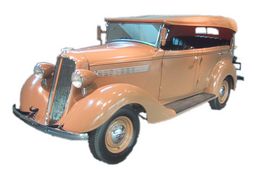
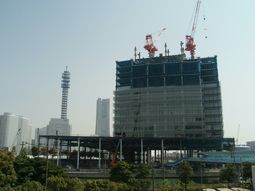
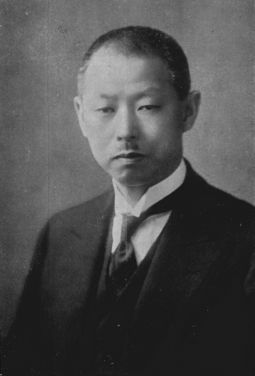
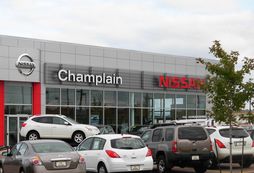
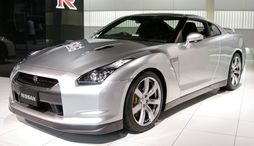
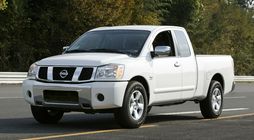
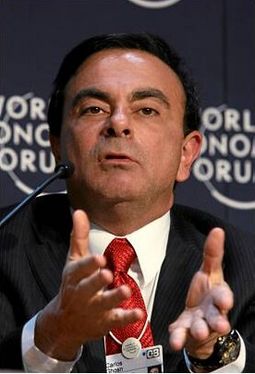
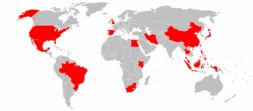
|